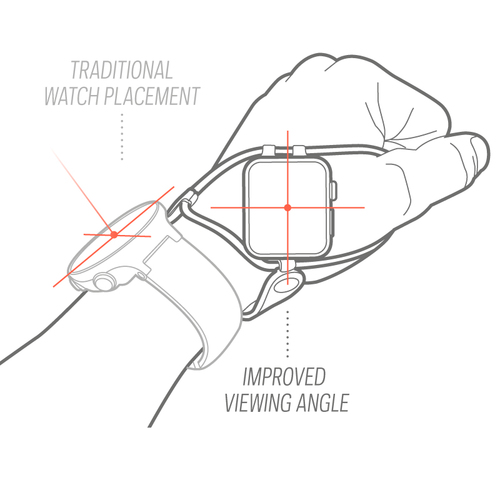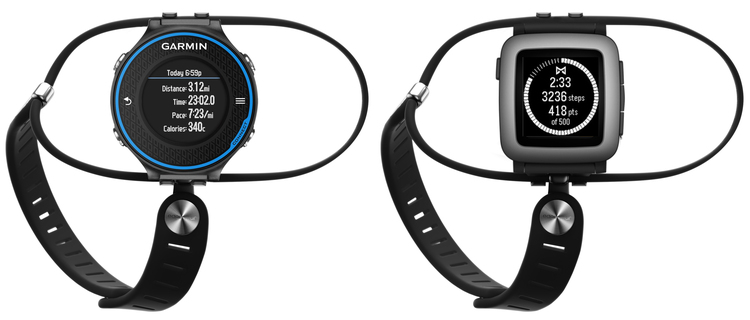Tuesday, April 5, 2016
Dry Land Swimming Part 1 and 2.
http://blog.voltathletics.com/home/2016/2/10/dryland-training-for-swimmers-part-1
http://blog.voltathletics.com/home/2016/3/23/dryland-training-for-swimmers-part-2?utm_source=social_media&utm_medium=facebook&utm_campaign=fb_post_dryland_swimming_part_2
Two great articles about dry land swimming, no need to rewrite, please visit the site.
Wednesday, March 16, 2016
Time To Get Out and Ride: NightRider SENTINEL™ 40
So the NR Sentinel 40 is an amazing safety solution.
The Sentinel™ 40 has a powerful 2 watt LED, 5 modes, is USB rechargeable and has a brand new safety feature, Laser Lanes! The Laser Lanes mode is designed to project ultra bright laser lines on the ground, giving the rider their own virtual lane.
- The Sentinel 40 complies with FDA standard for lasers, notice No. 50, 2007
- Highly visible laser lanes
- Ultra bright 40 lumen output
- All in one, Laser and tail light!
- USB rechargeable
- Group Ride Mode – be seen without annoying fellow cyclists
- The new standard in tail light safety
- FL 1 Standard IP64, water resistant

Wednesday, March 2, 2016
Transition: Indoor to Outdoor Training
This has to be one of the best articles about transitioning from indoor to outdoor training. The running section is something I have never read before: See the whole article from Training Peaks.
Run Considerations
Surface and Temperature
When switching from running on a treadmill to outdoors, head for hard packed trails and stay off the pavement if possible, particularly for extended downhills. Your body is used to the shock absorbing belt of the treadmill so it’s wise to minimize the impact of the ground. Wear softer, stable training shoes with good tread and grip for potentially slick or mucky trails.
Keep warm to remain injury free and stay healthy. Running is a high impact sport and cold muscles are less supple to absorb pounding. If the weather is below 52F (12C) avoid shorts. Keep your legs covered on windy days as well. Gloves and windproof gear are recommended, and don’t forget to dress in layers. A low core temperature stresses your immune system so keeping warm will help ward off illness.
Training
Trim down your distance/time run on the treadmill by 10 to 20 percent initially. The motor of a treadmill is doing some of the work, with the belt pulling your stride though and it can take one to two weeks for the body to adapt to the change in forces acting on your ligaments and muscles. The speed or pace settings on a treadmill are not always 100 percent accurate so when you head outdoors, focus on your effort, such as heart rate, until you are comfortable it has settled down into familiar territory. This will also allow you to complete a prescribed workout in the appropriate heart rate zones. Use this time to consistently remind yourself of proper form– running tall and not over striding. Counting your cadence is a way to program yourself to hold that economical 90rpm. Aim for 22 steps in 15 seconds.
Run Considerations
Surface and Temperature
When switching from running on a treadmill to outdoors, head for hard packed trails and stay off the pavement if possible, particularly for extended downhills. Your body is used to the shock absorbing belt of the treadmill so it’s wise to minimize the impact of the ground. Wear softer, stable training shoes with good tread and grip for potentially slick or mucky trails.
Keep warm to remain injury free and stay healthy. Running is a high impact sport and cold muscles are less supple to absorb pounding. If the weather is below 52F (12C) avoid shorts. Keep your legs covered on windy days as well. Gloves and windproof gear are recommended, and don’t forget to dress in layers. A low core temperature stresses your immune system so keeping warm will help ward off illness.
Training
Trim down your distance/time run on the treadmill by 10 to 20 percent initially. The motor of a treadmill is doing some of the work, with the belt pulling your stride though and it can take one to two weeks for the body to adapt to the change in forces acting on your ligaments and muscles. The speed or pace settings on a treadmill are not always 100 percent accurate so when you head outdoors, focus on your effort, such as heart rate, until you are comfortable it has settled down into familiar territory. This will also allow you to complete a prescribed workout in the appropriate heart rate zones. Use this time to consistently remind yourself of proper form– running tall and not over striding. Counting your cadence is a way to program yourself to hold that economical 90rpm. Aim for 22 steps in 15 seconds.
Friday, February 19, 2016
100 Mile Mountain Bike Race, You Can Do It!
Great article from TrainingPeaks on how to accomplish a 100 mile mountain bike race.
or many endurance athletes, a 100-mile mountain bike race is either a bucket list event or the capstone of their season. This distance takes both mental and physical training to properly prepare. The appropriate balance of endurance training and specific race preparation is important to ensure success.
You’ll want to start at least 28 weeks out from your race so as to have plenty of time to effectively integrate the three key periods of training. Using the base, build, and specialty phases will allow you to gradually build your endurance, threshold, and anaerobic capacity so that you’ve prepared all of your body’s systems for the event.
The Base Phase
The start of your race preparation will be the base training phase. Depending on your current level of fitness, this period should last approximately 12 weeks. During the base period the focus should be on building a strong aerobic base. Having solid endurance to build upon is critical for a successful 100-mile race. It’s during the base period that you’ll want to perform longer sub-threshold efforts to push your aerobic capacity.
This is also a good time to integrate strength workouts into your training to help prevent injury as you begin to gradually increase your volume and intensity. Remember that this is not the time to do hard anaerobic efforts- that time will come. Think of the base period as the foundation on which your successful season is being built. A couple of key workouts during your base period are:
Sweet Spot Intervals
20 minute warm up in zones 1 and 2. Then perform 30 to 45 minutes in your sweet spot (90 to 95 percent of threshold). Finish the ride in zone 2.
Aerobic Threshold
20 minute warm up in zones 1 and 2. Then perform 30 to 45 minutes at the top end of your zone 2 range. Finish the remainder of the ride at endurance pace.
Tuesday, February 9, 2016
Tri this, Red Bull 400, it Going to Hurt!
Running 400m doesn't sound like much of a challenge, does it? But what if you were to run those 400m at an altitude close to 200m and as a pure uphill sprint? That's a race guaranteed to put your calves, quads and endurance to the ultimate test.
Red Bull 400 is set to conquer the ski jumps of Europe and the US this year, putting sprinters all over the world to one of the toughest tests they will ever face.
Warm up your leg muscles and sign up for the hardest 400m of your life.
Red Bull 400 is set to conquer the ski jumps of Europe and the US this year, putting sprinters all over the world to one of the toughest tests they will ever face.
Warm up your leg muscles and sign up for the hardest 400m of your life.
Monday, February 8, 2016
Dave Mirra, Unexpected Loss!
Dave Mirra, an unexpected loss. Bikes, he loved them, could ride them all and was instrumental in bringing the X-Games to where it is today. He got into Triathlon late and was outstanding at them as well. You will be missed.
Great Article at SlowTwitch.com
Great Article at SlowTwitch.com
Thursday, January 28, 2016
Top 100 Running Blogs!
In case you missed this from blog.feedspot.com
http://blog.feedspot.com/2016/01/25/running-blogs/
http://blog.feedspot.com/2016/01/25/running-blogs/
Thursday, January 21, 2016
UK's First Indoor Mt. Bike Park. Dirt Factory
In light of how successful Ray's Indoor MTB Parks have been stateside, it's perhaps a little surprising that a similar concept has not yet popped up in the UK. With thousands of serious riders and fairly inclement weather conditions most of the year, you would have to think such a project would be met with instant success. Well, that is exactly what the team behind the "Dirt Factory" is betting on.
Regular participation in cycling can benefit people of all ages. The positive impacts on health and wellbeing are well documented. The social impact we aim to achieve through Dirt Factory is much more far reaching. Dirt Factory will be a community hub of riders, families and friends. We want to inspire people to have fun, be more confident on their bike and adopt cycling as part of their everyday life. Using the skills and experience gained at Dirt Factory, we believe riders will be enthused to ride more often. We have already established a number of partnerships with schools, universities, charities and community organisations keen to use Dirt Factory as a way to engage and develop their beneficiaries. Our plan is to house dedicated learning spaces and business incubator units within the infrastructure of Dirt Factory. We aim to provide learning, volunteering and employment opportunities to young people from communities across Greater Manchester.
Dirt Factory
Regular participation in cycling can benefit people of all ages. The positive impacts on health and wellbeing are well documented. The social impact we aim to achieve through Dirt Factory is much more far reaching. Dirt Factory will be a community hub of riders, families and friends. We want to inspire people to have fun, be more confident on their bike and adopt cycling as part of their everyday life. Using the skills and experience gained at Dirt Factory, we believe riders will be enthused to ride more often. We have already established a number of partnerships with schools, universities, charities and community organisations keen to use Dirt Factory as a way to engage and develop their beneficiaries. Our plan is to house dedicated learning spaces and business incubator units within the infrastructure of Dirt Factory. We aim to provide learning, volunteering and employment opportunities to young people from communities across Greater Manchester.
Dirt Factory
Tuesday, December 22, 2015
Bunny Hoping Skills
Bunny hopping is a technique that everyone wants to master, but some riders have a lot of trouble learning. If you’re having trouble and feel hopeless, this tutorial is just for you. If you already know how to bunny hop, I need your help in the comments section. There will be others with questions, so do your best to offer them helpful and friendly advice. No one should be deprived of bunny hopping.
Let’s start with a quick overview, then we’ll go into detail.
To bunny hop, you need to lift your front wheel off the ground, jump upwards, and push your bars forwards.
To do this, you’ll need to get your front wheel off the ground, so let’s start there and talk about what could go wrong.
First of all, if you’re small like me, you’ll need a small bike. If you’re big, you’ll be okay on a big bike. This is important because you’ll need plenty of space between you and your bike to pull up and transfer weight around. If your bike is too big, you’re going to have more trouble. So, make sure your bike is the right size for you.
Second, bunny hops are much easier on a mountain bike with an aggressive slanted back geometry. By this, I mean that the top of your seat tube is lower than your bars. Dropping your saddle is an obvious way to achieve this geometry, but some bikes just aren’t shaped right for this. In that case, you can get riser bars or a taller stem, which should help a little.
Third, you probably have front suspension, and maybe even rear suspension. Because suspension is designed to absorb changes in the terrain, it will also absorb your movements, thereby dampening your efforts at a bunny hop. To counteract this, you need to preload. Preloading is when you compress your suspension and use the recoil to work with you instead of against you. On suspension forks, this means pushing down before you pop up, kinda like the spring on a pogo stick. You see how the shocks can actually help pop you off the ground? Well, they won’t unless you preload.
For bikes with rear suspension, you’ll need to pull back even further to preload the rear suspension before you pop up. I find that it’s just as easy to hop on a full suspension as it is on a hardtail, provided you take the suspension into consideration and get a feel for the recoil.
Monday, November 16, 2015
AERO POUCH 300
From Triathlete
The rear bottle hydration mount is a popular choice for its proven aerodynamics, but figuring out where to store your flat kit can take some creative problem solving. That’s why XLab designed this two-in-one Aero Pouch 300, which keeps airflow clean behind the rider. The designers even took flapping zippers into account—there is simply a Velcro pull-tab to open the bag. Although it’s deceivingly compact, the pouch can fit a tube, tire levers, two CO2 cartridges, a patch kit and an inflator. XLab also claims it can fit most foam sealants for those riding tubular tires.
Note: XLab recommends the Aero Pouch 300 be used with only metal-mount carriers.
$45, Xlab-usa.com
$45, Xlab-usa.com
Monday, November 2, 2015
Simple, Easy Switch From Your Normal Watch Band

COMPATIBILITY
SHIFT band comes ready to fit many
watches, including Apple* Watch, Pebble, most spring-pin watches and many Garmin watches. See COMPATIBILITY OVERVIEW
watches, including Apple* Watch, Pebble, most spring-pin watches and many Garmin watches. See COMPATIBILITY OVERVIEW

ULTRA-LIGHTWEIGHT
Comfortable and snug fit that
weighs approximately 50% less
than traditional bands.
weighs approximately 50% less
than traditional bands.

MATERIALS
Designed in Norway, SHIFT has durability
and comfort at its core. In case you
didn’t know, Norwegians are fanatic
about the performance, function and
comfort of their gear!
and comfort at its core. In case you
didn’t know, Norwegians are fanatic
about the performance, function and
comfort of their gear!

LEFT & RIGHT
SHIFT flows with whatever side you
favor, offering an easy fit for both
left- and right-handed users (as well
as those who like to change it up).
favor, offering an easy fit for both
left- and right-handed users (as well
as those who like to change it up).

EASY ON/OFF
SHIFT goes on and off easier and
faster than a normal band.
When it's on, it is secure- You’re going to love it, we promise.
faster than a normal band.
When it's on, it is secure- You’re going to love it, we promise.

MAXIMUM ADJUSTABILITY
SHIFT band has an adjustable
strap that fits petit to large size
wrists and comes with 3 loop
sizes to ensure custom fit.
strap that fits petit to large size
wrists and comes with 3 loop
sizes to ensure custom fit.
Monday, October 12, 2015
AfterShokz: Trekz Bone Conduction Headphones
Join the military movement without having to sign up.
The power of the AfterShokz brand lies in a single key concept: be open. Yes, we're talking about headphones here. It's about your safety. It's about serious comfort. And, most importantly, staying connected—from your music to your moments—without compromise.
Behind this incredible open ear listening experience is our patented bone conduction technology. We've been in this business for years now. We know the benefits and we're all too familiar with the challenges. That's why we're confident in saying we've mastered the solution to bring you powerful, dynamic audio without the traditional limitations.
more..
Tuesday, September 22, 2015
3 Steps Off Season Training!
he off season is not a time to put your bike away, it is an enjoyable time and can benefit your spring training more than you realize. For most road riders and mountain bikers, the off season is September and October. The racing season is done and dusted, the weather is still good for the most part and you are still carrying some good fitness. So don’t go hanging your bike in the garage saying, “I’ll see you in January pal.” Make the most of this part of your season by having a purpose to some of your rides.
I break the off season down into three different segments: base building, skill set training, and strength training. The first two can be done together on the bike. The third segment takes place in a gym. You can take the next two months and make the most of them with some lightly structured training.
More Training Peaks
Wednesday, September 16, 2015
Marin Pine Mountain
This bike is perfect, trying out new stuff, bringing some old into the fold. I am sure there are complaints but why.
Named after one of Marin’s original models, the steel 27.5+ Pine Mountain hardtail features classically inspired lines. In its base level trim (Pine Mountain 1) is a fully rigid bike constructed from a 4130 tubeset.
From MTBR, read more...
Named after one of Marin’s original models, the steel 27.5+ Pine Mountain hardtail features classically inspired lines. In its base level trim (Pine Mountain 1) is a fully rigid bike constructed from a 4130 tubeset.
From MTBR, read more...
Subscribe to:
Posts (Atom)

















